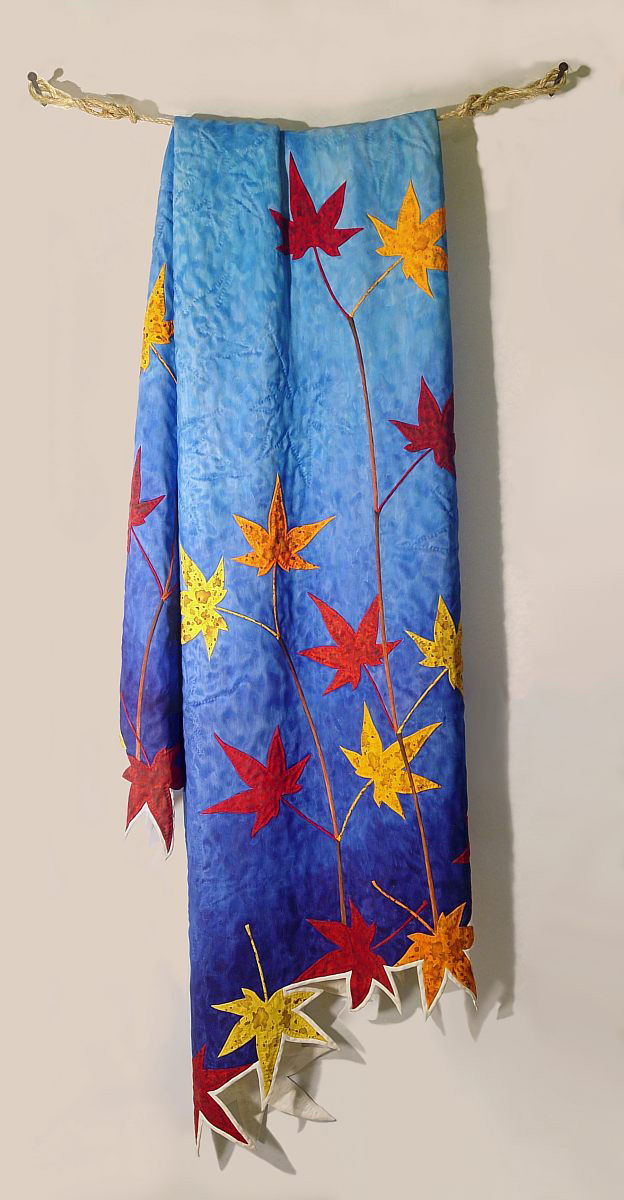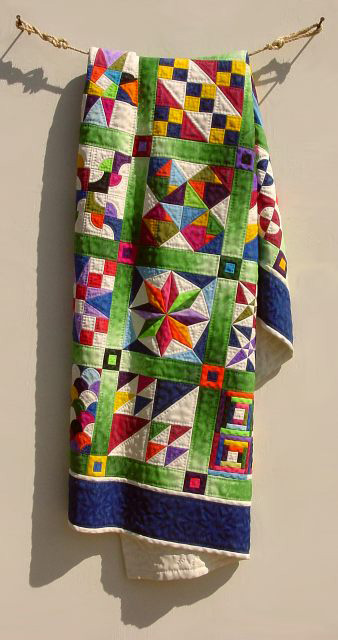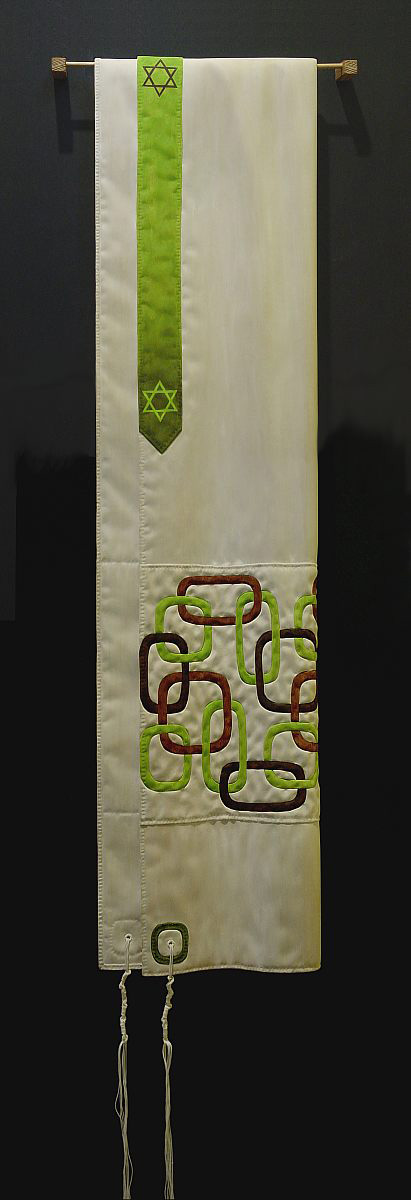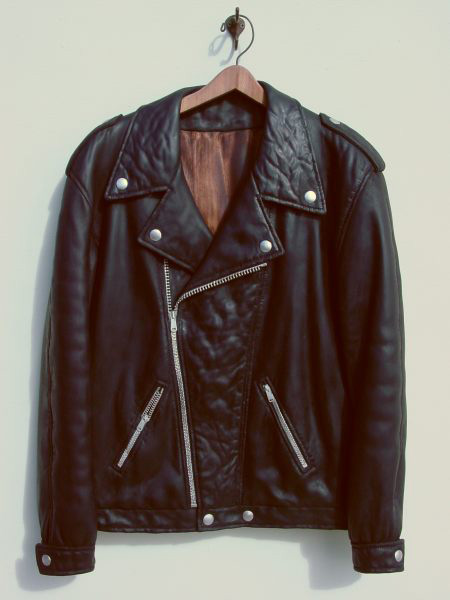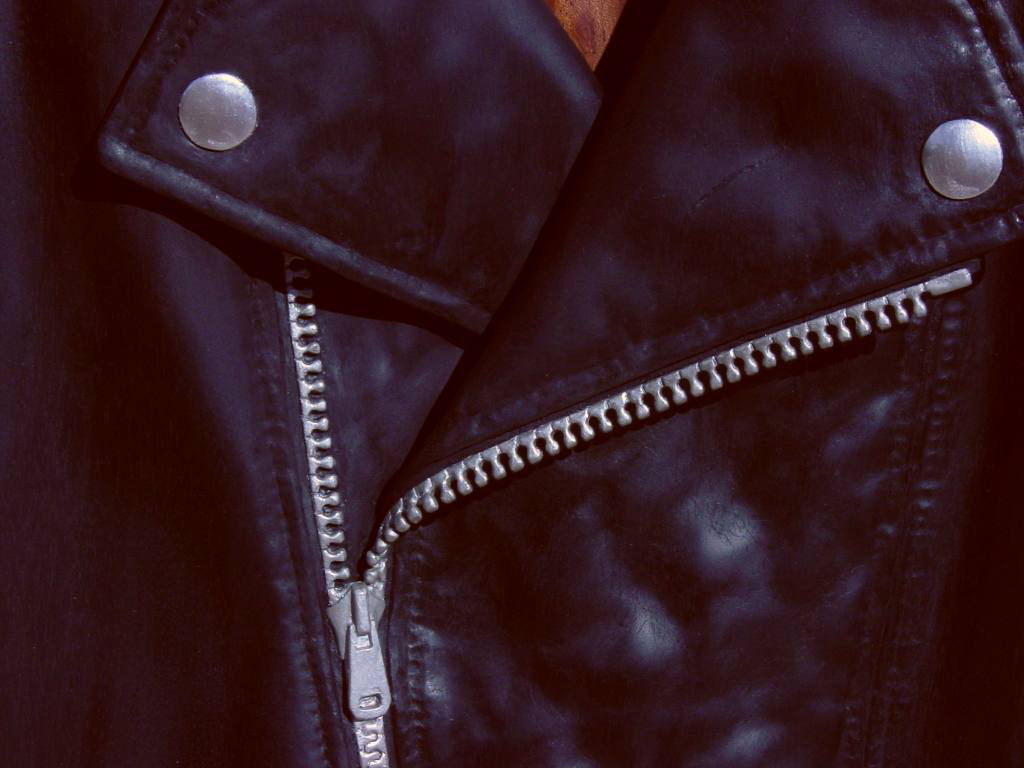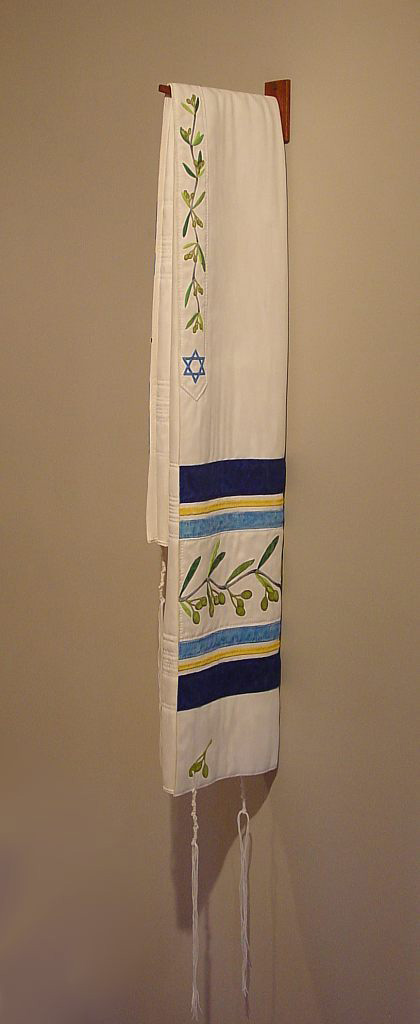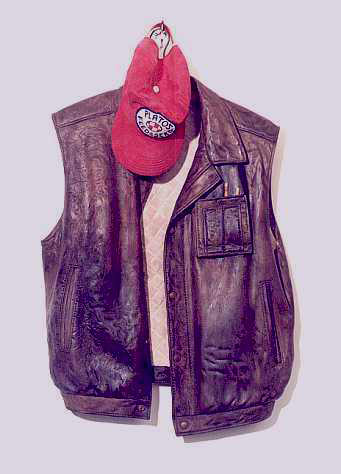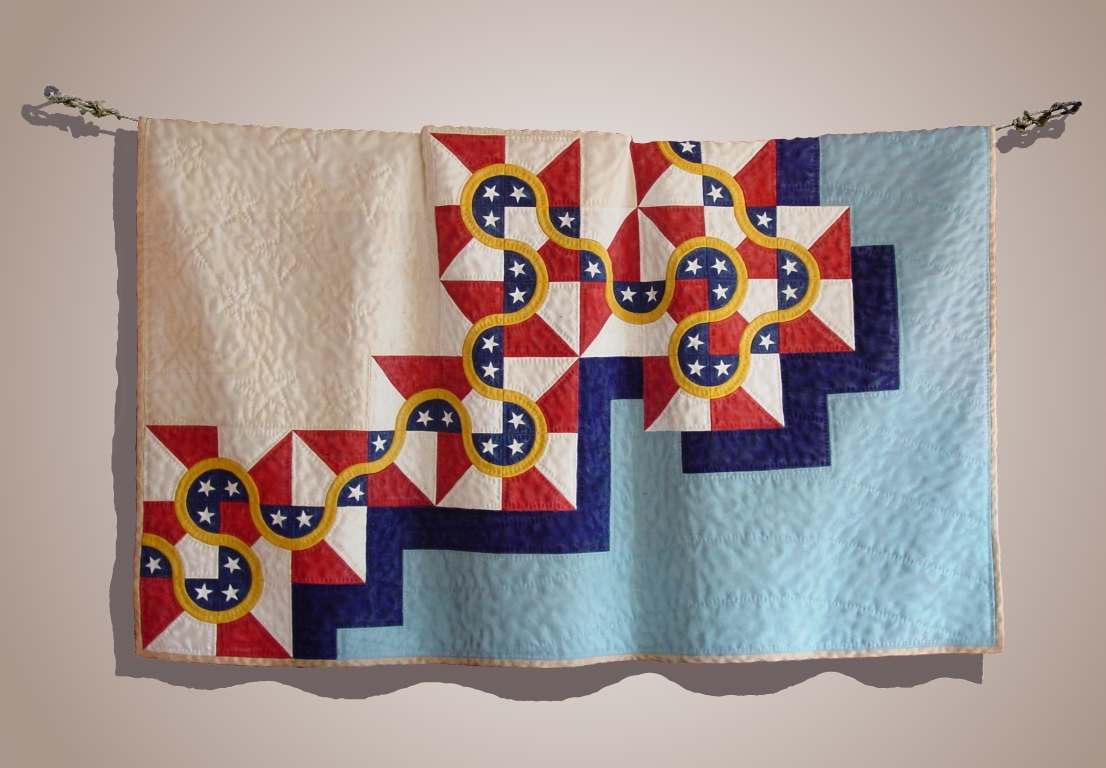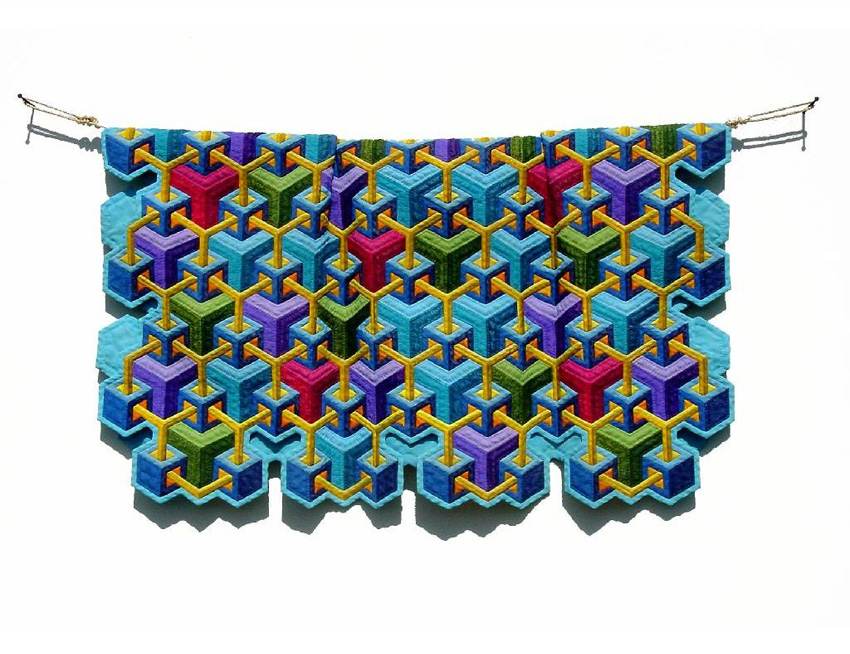
By the time you start reading these words you will have already noticed at least some of the pictures on this page. No doubt you are wondering why you are looking at pictures of quilts. Granted, they are beautiful quilts, expertly designed and stitched, but this is, after all, a woodworking magazine.
Look again. That’s carved, dyed wood.
Trompe l’oeil, the art of fooling the eye, is not uncommon among woodworkers. Some create marquetry pictures with veneer while others carve linen folds, leaves and flowers in wood, but what Fraser Smith does to wood goes well beyond even that. He carves and colors stunningly realistic, full-size quilts, jackets and even Judaica right down to the puckers around each individual stitch. Curious as to why he chose this odd niche, I asked Fraser to tell us the story of how he ended up doing such unusual and visually impressive woodworking.
“My father ran a sawmill in Mississippi,” Fraser recounted, “so there was always interesting wood around, and there were carving tools as well. My father built some furniture, but nothing fancy — mostly functional pieces. He taught me how to use carving tools with a few basic, inexpensive tools. Even as a youngster, I would carve little things, and continued to mostly goof around with wood until college.
“I went to Dartmouth College, and there I had access to an exceptionally good woodworking shop with the best of tools and an art department with exceptional carving tools. I was planning on becoming an architect, but got to take art and carving classes.
“One professor at the school used a lot of wood in his work, and was very proficient with it. He tended to give out assignments involving wood. One assignment he gave me back in 1980 was to make a leather doctor’s bag with a tuxedo hanging out of it. Though it was not up to my standards of today, I felt it was quite good at the time. A collector from New York City, who happens to live across the street from the Metropolitan Museum of Art, saw it and bought it. Most of the people in my class would have refused to sell their work in college, but I jumped at the chance.
“After college, I went to work for an architect in San Francisco for a year, but found I missed carving too much. I quit my job in 1982 and moved back to Tampa, but first I collected some tools and started carving again. Frankly, it was a bit of a rude awakening: at school I had access to plenty of the best tools. On my own, I had only a couple of chisels and a knife. Consequently, things went slowly.
“I got a big block of basswood and set out to carve a white, double-breasted coat that was hanging in the back of my closet. I had been carving roses and decided the best way to show off a carved rose was to put it into the lapel of a jacket. At the time, I had never seen anyone carve a jacket before and did not know others had done it.
“The first 10 or 15 years, it was all experimental. I saw each piece as a technical exercise, a challenge to see if I could carve something that looked like a jacket, or cloth or a quilt. Jackets were the first thing I did: first the white one, then a mahogany leather jacket, then others. The first coat took me a year and a half to do. When I added color to the wood, I discovered it looked even more like cloth.
“The first quilt was an extension of the same challenge; it upped the ante. The Judaica, a more recent addition, came from a suggestion by a fellow artist, who is Jewish. He knew I have a lot of Jewish friends that collect my work, and that I was looking for something different. He suggested carving a tallis, or prayer shawl. As a nod toward authenticity, the tzitzis, the four knotted threads on the corners of each tallis, are made of hand spun wool from Israel and are tied in the traditional pattern mandated by religious law.
“All my pieces are full-size,” Fraser pointed out. “Scale is important to me. I don’t like carving smaller things, and prefer working in full scale. There is a certain power imparted by seeing something full-size, especially something like a quilt. I want people to be amazed not just at the workmanship, but also at the scope and challenge of doing a piece that size.”
I asked Fraser to take us through the process of creating these amazing quilts. “I first carve the piece,” he explained, “including the patches, fine stitches and so on. For carving, I use rotary tools, scalpels and various sanders as well as more traditional carving tools. Look closely and you will see that carved in around each stitch in the wood there is a deformed depression that mimics what cloth does when a stitch pulls on it. The whole job is quite labor intensive, and about 80 percent of the time spent on each quilt is in sanding, much of it done by hand.
“After carving the shape of each patch of cloth where the color changes, I take a knife and run it down on a line between two different colors. That allows me to color one piece of wood without the color bleeding onto the adjacent wood. I use silk batik dyes and apply them with a small artist’s brush. Unlike watercolors, which I started with initially, these dyes keep their color without fading. The reason I did not use wood dyes was because they are not easily available locally and I could not find the range of colors I need.
“Once the wood is colored, I leave it alone. As the color goes on, it makes the surface look just like cloth, but adding a topcoat of finish would diminish the realism of the surface appearance. Consequently, I leave it unsealed. The result is a rich, silky looking color and surface.
“The first quilt took me a year to make, but these days I can do up to four quilts per year, with each one eating up some six hundred hours of labor. Prices for quilts range from $12,000 to $35,000 dollars. To have someone say they love your work is nice, but when they also agree to pay twenty grand for it, that is a statement of affirmation of your work.”
I asked Fraser if he had anything in particular that he wanted to say about his own work, and discovered I was not the first to ask him that. “Our local paper used to put a profile of a local artist on the back page of the arts section.” he told me. “When they put me on it, they asked for a quote. I told them there is nothing I can say that I find remotely unforgettable. My work should stand on its own without me having to say anything about it.”
Truth be told, Fraser’s “cloth” work does indeed “stand on its own,” in every sense of the words.
